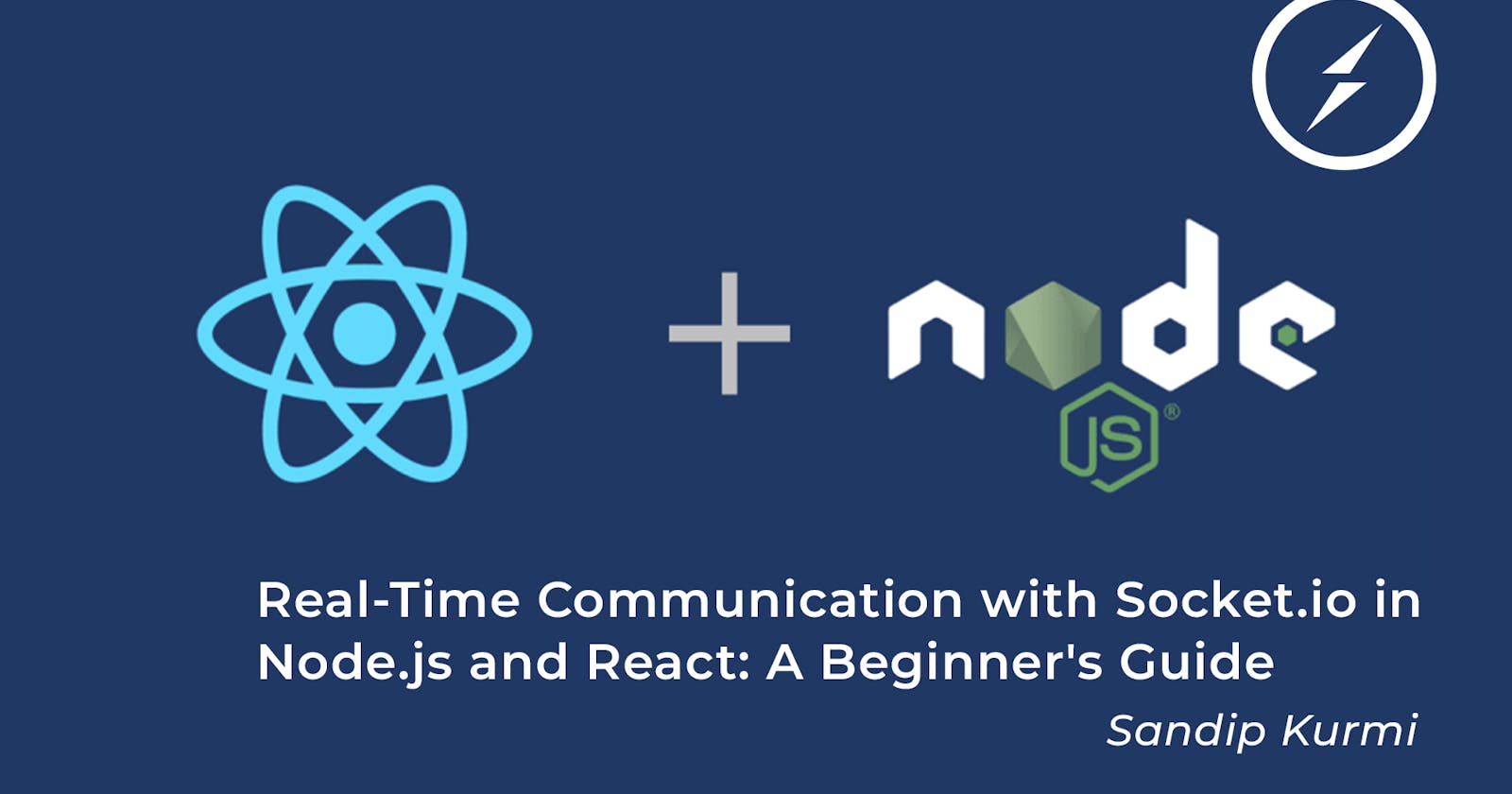Real-Time Communication with Socket.io in Node.js and React: A Beginner's Guide
Learn how to implement real-time communication in your Node.js and React applications using Socket.io. Build a basic chat application and explore the
Table of contents
Real-time communication has become an essential part of modern web applications. Socket.io is a popular library that provides a simple way to implement real-time, bidirectional communication between clients and servers. In this tutorial, we'll walk through how to set up and use Socket.io in a Node.js and React application.
Prerequisites
Before we get started, make sure you have the following installed:
Node.js and npm
React
Setting up the Server
First, let's create a new Node.js project and install the socket.io package:
mkdir socket-io-demo
cd socket-io-demo
npm init -y
npm install socket.io
Next, create a new file called server.js and add the following code:
const express = require('express');
const http = require('http');
const socketIo = require('socket.io');
const app = express();
const server = http.createServer(app);
const io = socketIo(server);
io.on('connection', (socket) => {
console.log('A user connected');
socket.on('disconnect', () => {
console.log('A user disconnected');
});
});
server.listen(4000, () => {
console.log('Server started on port 4000');
});
Here, we're creating an Express app and a Node.js HTTP server. We're also creating a new socket.io instance and listening for incoming connections. When a new connection is established, we log a message to the console. When a client disconnects, we log another message.
Setting up the Client Now that we have our server set up, let's create a new React app and install the socket.io-client package:
npx create-react-app client
cd client
npm install socket.io-client
Next, open up src/App.js and add the following code:
import React, { useEffect } from 'react';
import io from 'socket.io-client';
const socket = io('http://localhost:4000');
function App() {
useEffect(() => {
socket.on('connect', () => {
console.log('Connected to server');
});
socket.on('disconnect', () => {
console.log('Disconnected from server');
});
}, []);
return (
<div className="App">
<h1>Socket.io Demo</h1>
</div>
);
}
export default App;
Here, we're importing the socket.io-client package and creating a new socket instance. We're also setting up some event listeners for when the client connects and disconnects from the server.
Emitting and Receiving Events Now that we have our client and server set up, let's take a look at how to emit and receive events using Socket.io.
On the server, we can emit events to clients using the emit method:
io.emit('hello', 'world');
On the client, we can listen for events using the on method:
socket.on('hello', (data) => {
console.log(`Received: ${data}`);
});
Let's put this to use in our example. On the server, let's emit a message event every second:
setInterval(() => {
io.emit('message', new Date().toISOString());
}, 1000);
On the client, let's listen for this event and update the UI with the latest message:
import React, { useEffect, useState } from 'react';
import io from 'socket.io-client';
const socket = io('http://localhost:4000');
function App() {
const [messages, setMessages] = useState([]);
useEffect(() => {
socket.on('connect', () => {
console.log('Connected to server');
});
socket.on('disconnect', () => {
console.log('Disconnected from server');
});
socket.on('message', (message) => {
setMessages((messages) => [...messages, message]);
});
}, []);
return (
<div className="App">
<h1>Socket.io Demo</h1>
<ul>
{messages.map((message, index) => (
<li key={index}>{message}</li>
))}
</ul>
</div>
);
}
export default App;
here are some popular projects that a beginner can build using Socket.io:
Chat application: A simple chat application where users can communicate with each other in real time. This is a great beginner project as it will allow you to learn the basics of Socket.io and how to handle events.
Real-time notifications: A real-time notification system where users receive updates in real time as events occur. For example, a social media platform could use this to notify users of new messages, comments, or likes.
Online multiplayer game: An online multiplayer game where multiple players can join a game and play together in real time. This project will teach you how to handle real-time game events such as movement, collisions, and scoring.
Real-time analytics dashboard: A real-time analytics dashboard that displays data in real-time as events occur. For example, a website could use this to display real-time traffic statistics, user behavior, or sales data.
Conclusion
In conclusion, Socket.io is a powerful library for enabling real-time bidirectional communication between server and client applications. It is easy to use and can be integrated with Node.js and React applications to enable real-time communication between the client and the server.
We learned how to use Socket.io in a basic chat application, where messages were sent and received in real time. We also learned how to emit custom events and how to handle events on both the server and client side.
Socket.io offers many features and benefits, including automatic reconnection, rooms and namespaces, and real-time analytics. It can be used to build various real-time applications, including chat applications, real-time notifications, online multiplayer games, and real-time analytics dashboards.
By mastering Socket.io, developers can build robust and scalable real-time applications that enable users to communicate and collaborate in real time.
